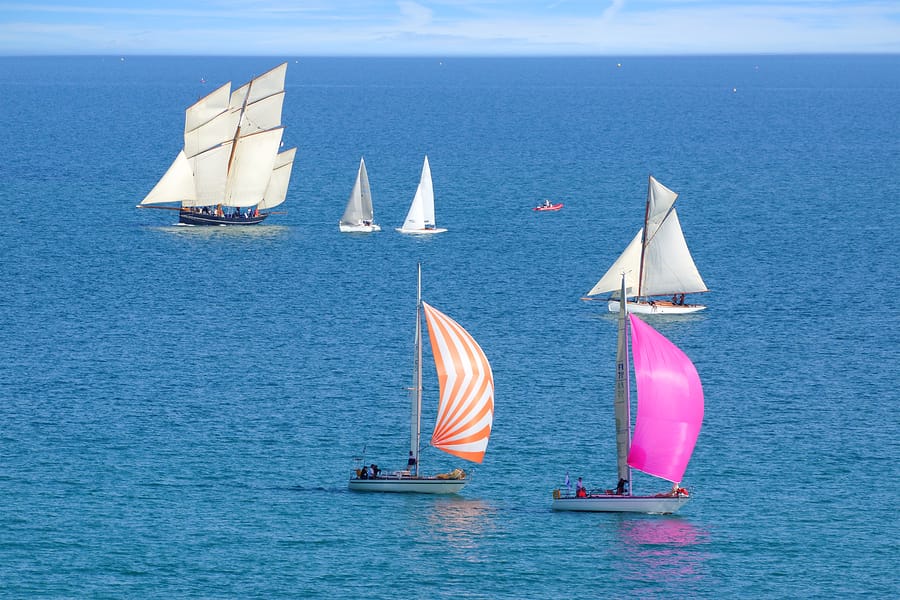Types Of Sailboats
A Sailboat is a water vessel which drives all, or part, of its propulsion from the force of the wind and water speed. Distinctions in size do not have strict definitions, and what comprises a Sailing Ship, a Sailboat or other small vessel varies across regions and cultures.
There is a large variety of Sailboats, each having its own characteristics and styles. They can be differentiated based on the purpose and number of Hulls or Sails.
There are many types of Sailing Ships, but the basic components are relatively the same: every Sailing Ship has a hull, rigging, and at least one mast to hold up the sails.
Knowing the different Sailboat Types is important when learning to sail. In this section, know what the basic Sailboat Types are and learn the features of each.
Below are some examples:
Catboat
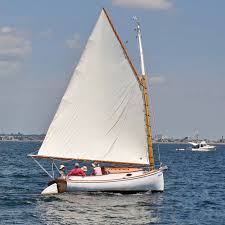
The catboat has a single mast well forward. This design of the sail plan emerged in the 19th century in North America and was used for fishing and transport in coastal waters because of their great beam. Catboats can be quite fast but perform poor to windward. They come gaff-rigged or with Bermudan sails. Nowadays, there are mostly used as a small pleasure day sailing vessel, and it has its own place within the racing community.
Catamaran
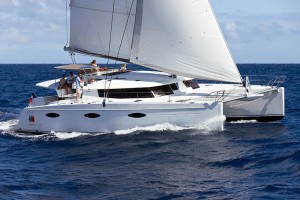
A Catamaran is a boat with two hulls. It is usually lighter, much faster than a monohull sailboat, and more stable because of the wider distance from one side of the boat to another. This leads to more sail area carried for every foot of length compared to a single-hulled Sailboat.
Clipper
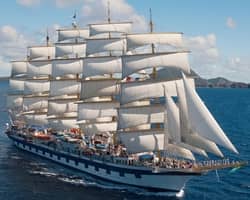
Clippers are large sailboats used mainly in the 19th century as merchant ships. Clippers have between three and five masts and square rigs.
Cutter
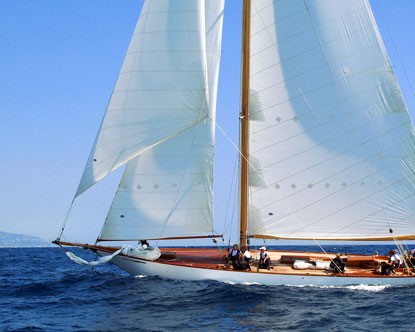
The cutter rig has one mast, which is further aft than on a sloop and carries one mainsail and two or more headsails. A traditional cutter will have as well a bowsprit. Pictured on the left is a gaff rig cutter that has a mainsail and the main topsail. The mainsail has four sides and is supported by a gaff, therefore a gaff rig cutter. Nowadays, you will find as well Cutter rigs with Bermudan sails. This is an easy to handle cruising rig. The sail before the mast is called stay sail, which can have its own boom on the food of the sail, which allows self-tacking.
Day Sailers
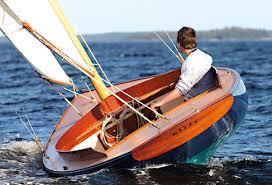
Relatively small sailboats without sleeping quarters, but they come with small cabins intended for storage space and a little shelter. Daysailers are stable crafts and are sailed like small yachts.
Ketch
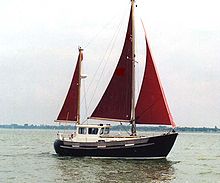
The Ketch is a popular cruising rig too. It offers a large sail area and is still shorthanded manageable. This rig has two masts, the main and the smaller mizzen mast, which is forward of the rudder. The sail on the mizzen mast is called mizzen sail. It is as well possible to have a cutter-rigged Ketch, which will carry more than on foresail, usually, a self-tacking staysail and a jib. The main and mizzen sail could be with a gaff or a Bermudan shaped sail.
Lateen
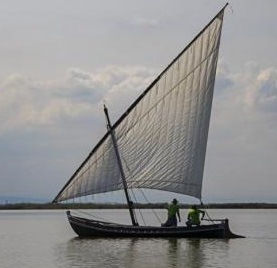
A Lateen is a sailboat with a triangular sail attaching on a long wooden pole called “antenna”. It is an invention of the Arabs and we find it mainly in Egypt.
Schooner
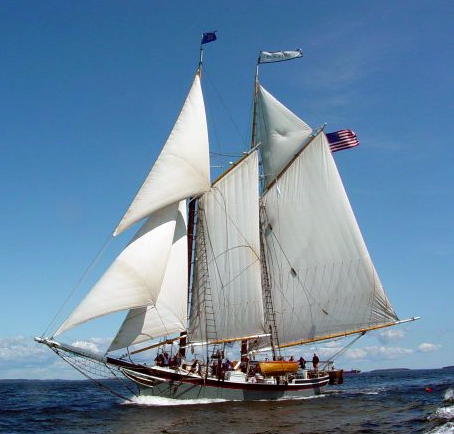
The schooner has two masts where the first one is smaller than the second and can have more than one foresail. This type of rig emerged in the 18th century, and the largest schooner build had seven masts. They were used commercially as pilot, fishing or cargo vessels and could sail better to windward than previous rig designs. Nowadays, some larger cruising yachts use the two-masted schooner rig, which is easy to sail short-handed. The schooner comes as well with gaff or Bermudan sails.
Sloop
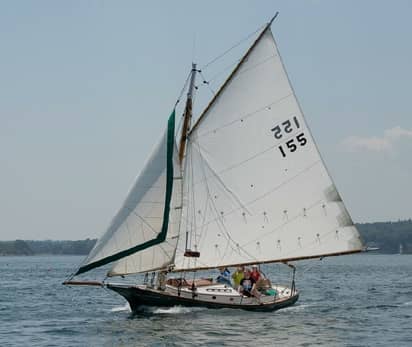
Probably the most used rig nowadays is the sloop rig, which has above all other types the best performance to windward but needs extra sails like a spinnaker to perform well downwind. The sloop rig has one mast which carries a mainsail to aft and a fore or headsail to forward. The Bermudan sloop originated from the Bermudan Islands in the 17th century and was continuously developed further. We can find this rig on racing sloops with high aspect sails competing in the America’s Cup.
When the forestay ends at the top of the mast then the sloop is called Masthead, while when it ends lower (at 7/8 of the mast) it is called Fractional.
Trailer Sailer
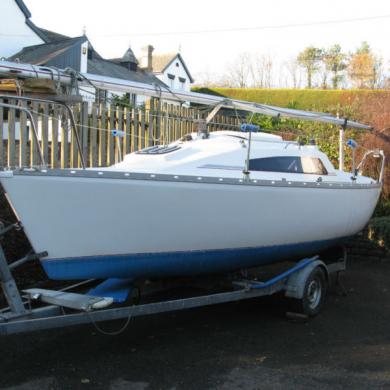
A small sailboat which can be moved towards different areas by the use of road trailers towed by an automobile. They are usually larger than a sailing dinghy. They are especially popular with small families and retirees and are used for both racing and recreation.
Trimarans
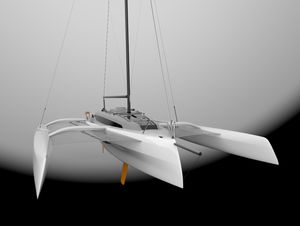
A Trimaran is a multi-hulled Sailboat. It has a main hull with two smaller Hulls located on each side, giving the Trimaran greater stability. Compared to a single-hulled Sailboat, a Trimaran has a wider Beam and can keep its stability even in stronger winds. However, it is a bit harder to maneuver because of its structure.
Yawls
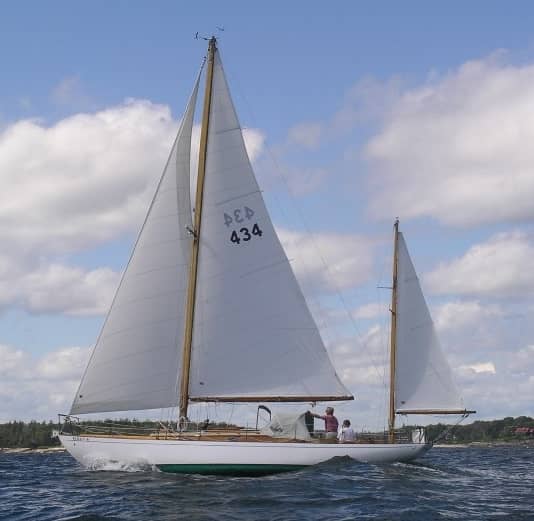
The yawl rig has like the ketch to masts, but the mizzen mast is aft of the rudder. This sail plan derived originally from commercial fishing boats. Later on, it became quite popular with single-handed sailors because sails could be trimmed to sail without having to control the rudder.
In comparison to the ketch, the mizzen sail on a yawl is less for propulsion than for balancing the rest of the rig. Nowadays, the yawl lost popularity since other steering aids like electronic autopilots or mechanical wind vanes make her mizzen sail and mizzen mast redundant. The yawl comes as well with gaff or Bermudan sails.
Types Of Sailboats – Concussion
These are some of the basic Sailboat Types. There are many other styles out there, but whatever type you want to use, just make sure that you are knowledgeable on the features of that particular Sailboat so you can handle it properly.
Whichever boat a sailor chooses is unique. Their characteristics are different, but one. They are all sailing boats and that means they have sails. These sails are called Mainsail, Jib and Spinnaker, depending on their type. Depending on the size, the material, the construction, and the strength, they have different types. The only sure thing is that no matter how different they are, all they need is good sailors.
